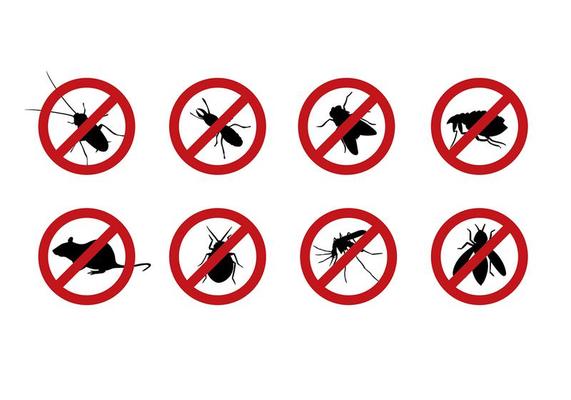Bed Insect Therapy Breakdown: Contrasting Chemical Vs. Non-Chemical Solutions
In the realm of insect control, particularly when dealing with the consistent concern of bed bugs, the selection in between chemical and non-chemical treatment solutions can be a crucial one. Both approaches supply distinct advantages and downsides, influencing aspects such as effectiveness, safety and security considerations, and overall cost. By taking a look at the nuanced details of each method, a clearer understanding of which course to go after in addressing a bed insect invasion can be achieved.
Efficiency of Chemical Therapies
Chemical treatments for bed insect problems have been commonly recognized for their fast and potent efficiency in eliminating these pests. When considering the efficiency of chemical treatments, it is essential to understand that they can give a thorough and fast option to a bed bug problem.
In addition, chemical treatments have the benefit of supplying residual effects, meaning that they can proceed to eliminate bed insects even after the preliminary application. This residual activity is especially useful in combating any kind of potential re-infestations. Additionally, the quick activity of chemical treatments can bring alleviation to individuals dealing with serious bed bug problems, permitting them to restore control of their space rapidly.
Safety And Security Interest In Chemical Solutions
When making use of chemical services for bed bug treatment is making certain the safety and security of owners and the setting,One important element that needs cautious consideration. While chemical treatments can be effective in eliminating bed bugs, they may present threats if not managed properly. One of the key safety interest in chemical options is the potential damage they can trigger to human health and wellness. Direct exposure to particular chemicals utilized in bed pest therapies can lead to respiratory system problems, skin irritation, or various other negative reactions, especially in people with pre-existing conditions or level of sensitivities. In addition, inappropriate application or dose of chemical pesticides can lead to harmful residues remaining in the cured location, posturing long-term health threats to residents.
Additionally, the ecological effect of chemical services is one more substantial consideration. Some chemicals used in bed pest therapies might be harmful to valuable insects, wild animals, and communities if they seep into the soil or water supply. It is vital to utilize chemical treatments sensibly, complying with safety guidelines, and thinking about less poisonous options to mitigate these dangers and ensure the reliable and secure management of bed bug invasions.
Advantages of Non-Chemical Strategies
Thinking about the possible safety problems and environmental influence connected with chemical services for bed insect treatment, exploring non-chemical strategies offers a promising alternative with several unique advantages. Non-chemical methods supply a more secure choice for homes, specifically those with people, youngsters, or pets delicate to rough chemicals. These approaches remove the threats of direct exposure to poisonous materials, reducing the potential for negative wellness effects. Moreover, non-chemical therapies are eco friendly, as they do not add to air or water pollution, making them a sustainable choice for pest control.
In addition, non-chemical services can be effective in targeting bed bugs, consisting of hard-to-reach locations where chemical therapies might not penetrate. Methods such as warmth therapy, vacuuming, steam cleaning, and mattress encasements supply detailed removal without using damaging chemicals. In addition, non-chemical approaches can be less disruptive, calling for marginal prep work and enabling quicker reentry into treated locations. Generally, choosing non-chemical bed pest treatment methods not only focuses on security and environmental management however additionally guarantees reliable and thorough insect control.
Limitations of Non-Chemical Treatments

Additionally, non-chemical treatments often require numerous applications to achieve successful eradication. This can be taxing and may not constantly ensure complete removal of all bed bugs and their eggs, especially in hard-to-reach or covert areas.
In addition, the success of non-chemical therapies heavily depends on appropriate application and thoroughness, which can be challenging for people without professional knowledge. Inadequate application of non-chemical techniques might result in incomplete removal, leading to relentless invasions and the need for extra treatments.
Consequently, while non-chemical treatments have their benefits, it is necessary to acknowledge these limitations and consider them when determining one of the most reliable approach for managing bed bug invasions.
Price Contrast: Chemical Vs. Non-Chemical Options
Provided the constraints associated with non-chemical treatments, an important aspect to evaluate in the context of bed bug management is the cost comparison between chemical and non-chemical choices. In comparison, non-chemical treatments like warm treatment or steam can be extra costly, with costs ranging from $1,000 to $6,000 for an entire home. While the preliminary cost of chemical therapies might seem reduced, multiple treatments might be required to completely eliminate the problem, potentially increasing the total expense.
Conclusion

Thinking about the potential safety and security issues and environmental impact associated with chemical pop over to this web-site solutions for bed bug treatment, checking out non-chemical approaches offers an encouraging choice with numerous distinctive benefits.Offered the restrictions associated with non-chemical therapies, an important element to examine in the context of bed insect monitoring is the cost contrast in great site between chemical and non-chemical alternatives. In comparison, non-chemical therapies like warmth treatment or steam can be a lot more pricey, with prices ranging from $1,000 to $6,000 for a whole home. While the initial price of chemical treatments may seem reduced, several therapies may be called for to totally eliminate the invasion, potentially boosting the total price.In conclusion, when comparing chemical and non-chemical bed insect therapy options, it is vital to take into consideration effectiveness, security, benefits, constraints, and expense.
Comments on “Professional A1 Charlotte Bed Bug Exterminator - Quality Service Guaranteed”